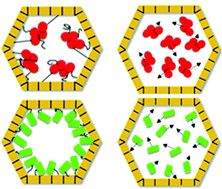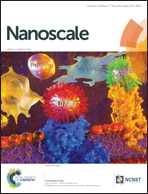Cargo–shell and cargo–cargo couplings govern the mechanics of artificially loaded virus-derived cages†
Abstract
Nucleic acids are the natural cargo of viruses and key determinants that affect viral shell stability. In some cases the genome structurally reinforces the shell, whereas in others genome packaging causes internal pressure that can induce destabilization. Although it is possible to pack heterologous cargoes inside virus-derived shells, little is known about the physical determinants of these artificial nanocontainers’ stability. Atomic force and three-dimensional cryo-electron microscopy provided mechanical and structural information about the physical mechanisms of viral cage stabilization beyond the mere presence/absence of cargos. We analyzed the effects of cargo–shell and cargo–cargo interactions on shell stability after encapsulating two types of proteinaceous payloads. While bound cargo to the inner capsid surface mechanically reinforced the capsid in a structural manner, unbound cargo diffusing freely within the shell cavity pressurized the cages up to ∼30 atm due to steric effects. Strong cargo–cargo coupling reduces the resilience of these nanocompartments in ∼20% when bound to the shell. Understanding the stability of artificially loaded nanocages will help to design more robust and durable molecular nanocontainers.


 Please wait while we load your content...
Please wait while we load your content...